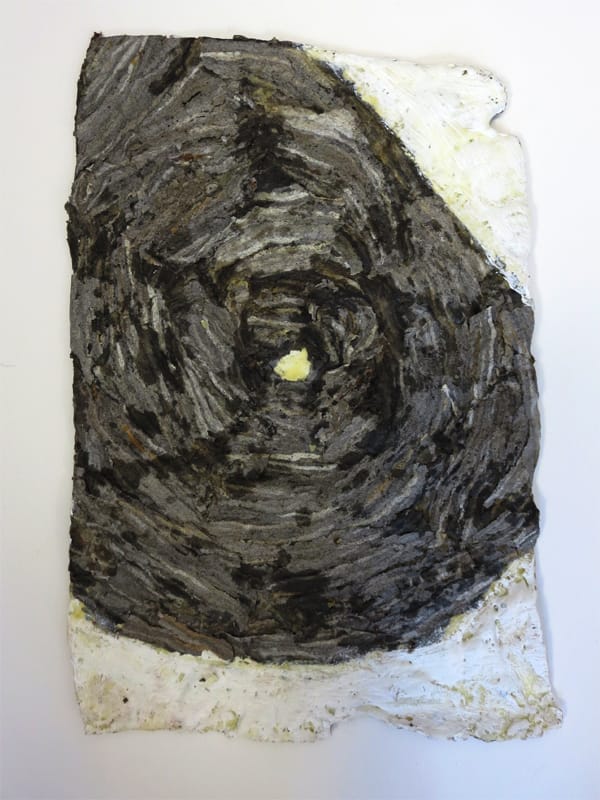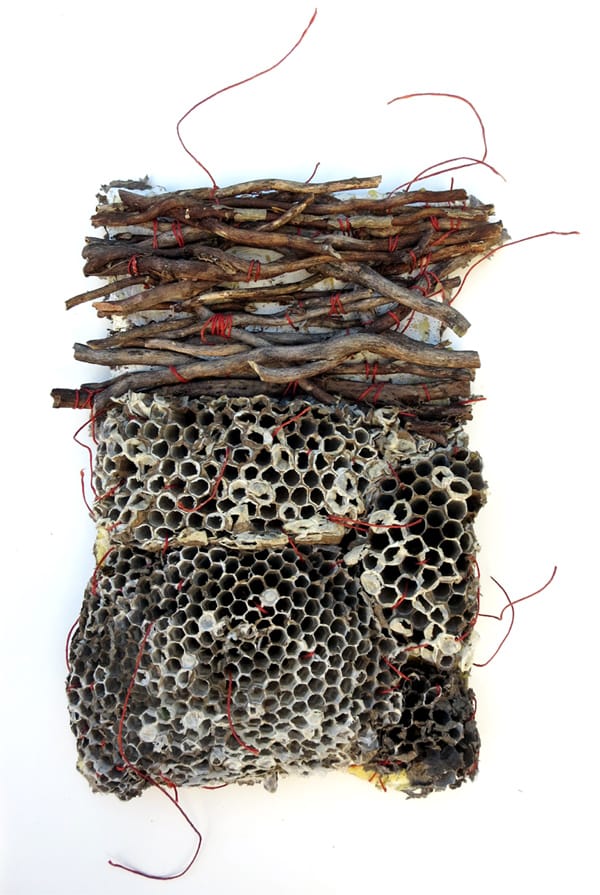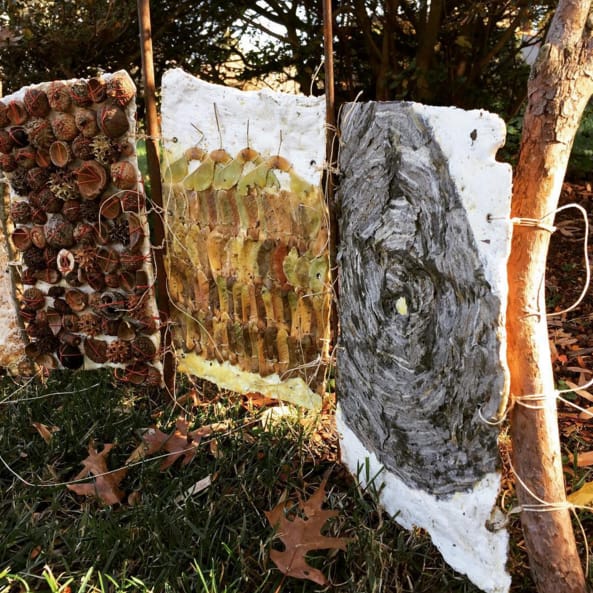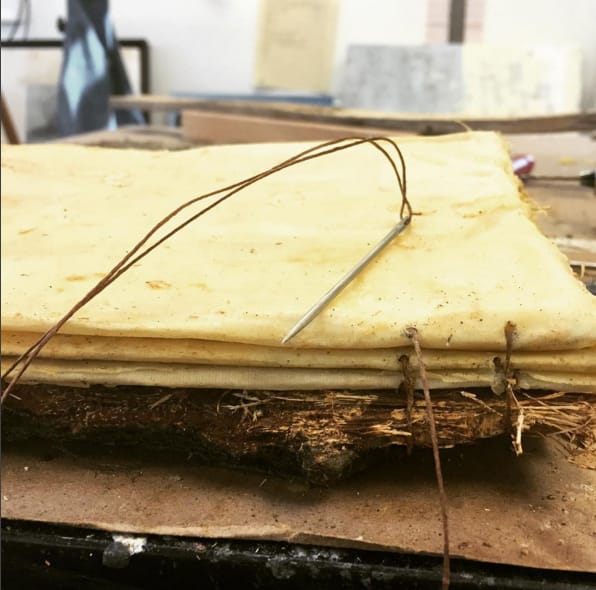“If all mankind were to disappear, the world would regenerate back to the rich state of equilibrium that existed ten thousand years ago. If insects were to vanish, the environment would collapse into chaos.” -E. O. Wilson
What a thought that is…
There are a few pages from the book of collecting and gathering that I still want to share. These three pages focus more on the insect world. I am so fascinated by the structures that birds and insects create- the beauty and the genius. I did have a bird nest that I wanted to add to this Book of Collecting and Gathering, but it was too fragile and would not have lasted. Thanks to friends who know how much I love nature’s creations best of all, I have a collection of paper wasp nests and hornet nests in my studio. I find hornet nests particularly compelling. I have to admit that when I see one that is teeming with hornets, that I keep my fascination at bay and stay clear away. But come fall, after a hard frost, when the nests are abandoned and there is no threat of being stung, I cannot help myself but to take a closer look. The swirled paper that makes up the nest is made of chewed wood fiber mixed with saliva. The swirls of gray and white and tan curve all around the globular structure. When I cut one of the nests open, I found a big dimensional comb sitting inside. When I say dimensional, it was a comb on top of a comb, kind of like a tiered wedding cake. I had no idea! Upon further research I found out that paper wasps have a comb, but lack the paper coverings that hornet nests have. So if you just see a comb, it’s a wasp nest. If you see the big gray enveloping structure, that’s a hornet nest. I am no expert, so if anyone knows better, please chime in!
For this page I wanted to echo the circular design of the hornet’s nest and the circular entrance that sits at the bottom of the nest. An entrance into another dimension.
On this page, some of these combs are hornet combs and others are paper wasp combs. At any rate, I sewed them together. Above are dried English Ivy vines. Where I live English Ivy is an invasive that is everywhere and every year I battle with it. With this page though, I came to terms with the ivy and used it as part of this book.
Back of the previous page. I just love the paper that the hornets make out of wood pulp.
I bound these pages and the pages I shared in the last post using an accordion structure. They are bound to branches as well as to metal rods. This book is pretty heavy. When it is opened, it is almost 4 feet long. I set it up in my backyard this past week to see if I needed to make adjustments and the light out was golden and I snapped a few shots.
This past week I finished my third book in the Field Guides series that I titled “The Secret Language of Trees” and it’s an homage to some old trees that were cut down on a property nearby. Here is a process shot of the book.
I will be installing the three books on Saturday.






All I can say is “WOW..just amazing & wonderful”
i am knocked out by this.
The artist impulse – a balance of intrigue and inspiration.
Incredible gifts of nature – an amazing way of documenting them so we really see them. Thank you – I am thoroughly enjoying this journey with you!
Fabulous! Very inspiring! I like how you are using nature’s inspiration to guide your work!
so inspiring bridgette! thanks for sharing!
WOW …WOW and more WOW. What an amazing, beautiful, inspiring, thought provoking project. Thank you for creating it, and for sharing all of the amazing images. so very beautifully done.
I have just discovered you and your work thanks to Pinterest. Your work is so inspiring!
I have especially enjoyed seeing the collections series. I have had similar collections for years but never considered making them into a book. I have a collection of dead little lizards that fascinate me as they seem to have expired in mid motion… I know to some this sounds disgusting but I find them so interesting.Here in Florida they are everywhere, and then nowhere to be found.
Thank you so much for sharing.
Hi Kristen, thanks for stopping in and for your message. I just saw a really interesting image on pinterest recently where these old books were kind of like boxes and inside were preserved plants, seeds, etc. Could be an interesting way to display your lizards!